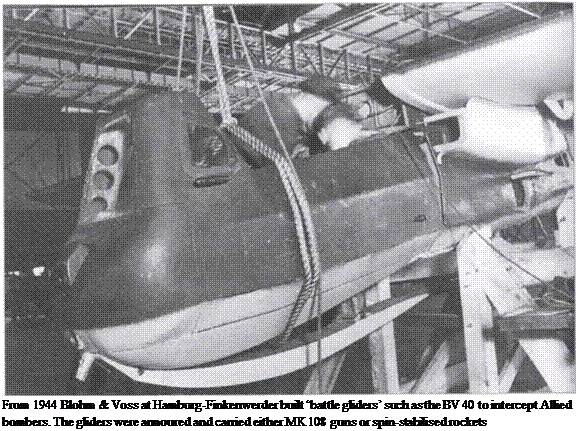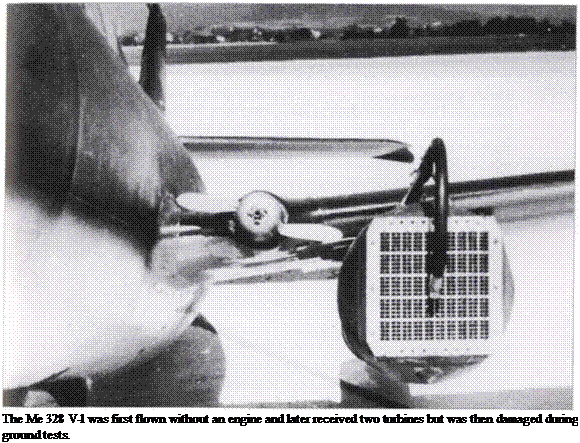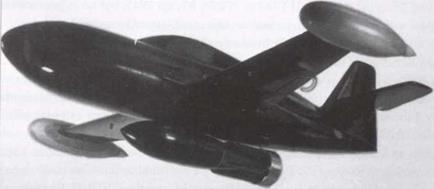Operations Freiheit and Bienenstock
|
B |
ecause of many poor decisions by the policy-makers from Reichsmarschall Goring down, the air war was ending in catastrophe for Germany. To bring about any transformation in this situation, fanatical efforts by pilots and crews would be necessary. As there were insufficient aircraft to hold off the Allies, it was now time to consider operations whose execution would inevitably result in the death of the pilot. In the end, Luftwaffe crews would aim their aircraft at Soviet pontoon bridges over the Oder and fight tanks with Panzerfaust rockets.
Self-Sacrifice or Final Salvation?
A secret report of October 1943 from the Academy for Aviation Research (LFA) entided ‘Suggestion on Assembling a Luftwaffe Formation for Effective Pin – Point Bombing’ considered at length the possibility of operations in which the pilot had only a 50 per cent chance of survival. The volunteers would draw their targets by lot. The primary source of recruitment was to be amongst glider pilots although members of the formation could be drawn from all arms of service. The new aircraft would be the manned V-l. Any sacrificial pilot who lost the will to carry through his mission to completion ‘will be shot immediately’, the document recommended.
At the beginning of February 1944 the manned bomb idea was considered at a working conference of the LFA, and ground rules set out for the future development. These concerned not only the likely type of target, but also the machine. For the greatest possible damage, bomb-loads such as the PC 1800 and heavy ‘torpedo bombs with aerial’ (guided bombs) seemed appropriate. In the two-month training period the future suicide pilots would receive training in a flight simulator and be taught to recognise all important warship types. With purpose-built 5-metre long practice bombs, the men would then make gliding approaches to training targets, baling out by parachute shortly before the collision. The later operational machines would have no means of escape, a letter dated 21 February 1945 from a Rechlin flight surgeon to the RLM explained. The main reason for publicising this was to reduce the expected large number of

volunteers for the project. The idea had a life of its own, however, and was taken up by the Geschwaderstab at KG 200 from where, in March 1944, an approach was made to Generalfeldmarschall Milch and the Chief of the Luftwaffe Command Staff which coincided in virtually all respects with the ideas promulgated at the LFA conferences.
It was decided to produce 5,000 Me 328 wooden midget aircraft for the project, and woodworking began in mid-March 1944. Carpenters and other woodworkers at small and medium-sized concerns were exempted from conscription to protect the project. Behind the scenes heated discussions continued about ‘self sacrifice’. The situation was clarified in a session of 27 March 1944 attended by Flugkapitan Hanna Reitsch and senior officers from OKL. It was agreed that a piloted bomb was the best way to destroy major warships – a PC 1400 or ВТ 1800 bomb might even sink a battleship – and the aircraft for the job was the Me 328. Other machines such as the Bf 109, Me 163 and Fw 190 were considered before being ruled out as more essential for
Reich air defence. In conclusion it was decided to accelerate Me 328 testing and force through the production of prototypes leading to early series production; later the piloted V-l would also be considered.
The first drawings for project Go P 55 were completed at Gotha on 17 April 1944. This was a modification of the ВТ 3000, a flying bomb with rudimentary wings proposed despite the decision of the research team leaders on 27 March 1944 to go for the Me 328. The KG 200 Kommodore considered that an Fw 190 F-8 carrying an SC 1800 was adequate and suggested rejecting the Go P 55 and other suicide aircraft. The advocate of the latter, Oberleutnant Lange, of whom more later, was not to be deterred, and pursued the self-sacrifice concept inherent in the Gotha machine.
Me 328

The first aircraft fully suitable for suicide operations was the Me 328, a small machine with ramjet propulsion conceived originally as a parasite fighter to be

carried by a long-range bomber, or later used in the local anti-bomber role. The veteran DFS test pilot Erich Klockner said after the war that flying the Me 328 was not a pleasure. In a towed start the aircraft was difficult to handle and it was even worse under ramjet power. Although this was well known, in March 1944 serious thought was being given to a manned Me 328 with a 1,600-kg bomb – load. To ensure accuracy the pilot would sacrifice himself or bale out as close as he could to the target once the aircraft was certain to collide with it. The idea was top secret. A part of the development was handled by DFS Ainring near Bad Reichenhall in Bavaria where the technical preparations were taken hastily in hand.
The machine had begun life on 14 December 1942 when the Technical Office ordered ten experimental aircraft (Me 328 V-l to V-10) for testing at DFS Ainring. An option for a further ten was not taken up. At that time there was no call for them since Germany had no giant strategic bombers, and tests of the А-prototypes did not proceed. Me 328 В was a variant ‘Special Development for the Fast Bomber Role’. These would be low-level attacks on important targets made by ‘flying coastal artillery’ against the Allied invasion fleets on the French coast when the invasion came. The planning provided expressly for a Mistel take
off, DFS Ainring favouring the Do 219 M-l as the parent aircraft since it was 10 per cent more powerful than the earlier Do 217 E variants.
After lengthy wind-tunnel tests work started on Me 328 В V-l and V-2. Prototype V-l arrived at the DFS annexe at Horsching/Linz on 18 May 1944 and after vibration tests was put on the test flight programme for the summer. In June 1944 the Kittelberger firm of Hochst/Bregenz took over construction of the second prototype after Jakobs-Schweyer Flugzeugbau GmbH received orders to build the wooden tail section for the Me 262.
A two-seat Me 328 trainer development was abandoned in the summer of 1944 because of the expense. The possibility of using the Me 328 as the parent aircraft of a Mistel pair was given up because it did not have the range for the return flight, nor the speed to evade enemy fighters in a long pursuit. Its only use therefore was as a ‘piloted bomb’, the former ‘Fast Bomber’ now being loaded down with a 2,500-kg bomb. Attacks would be made in a gliding approach. The Me 328 would be towed to operational height by a Ju 88 S-3 or Ju 388 K-l.
On 3 June 1944, Me 328 V-II, the converted second prototype, was probably flown by engineer ‘Gretchen’ Ziegler in a Mistel arrangement with a Do 217 K-03. A final flight under ramjet propulsion is also credited to Ziegler, although he was forced to bale out after engine vibrations broke the aileron control rods. Me 328 V-II was a total loss. Besides the two completed machines, a third was
I——————————————————
|
|
More or less how the planned Me 328 would have looked. Its primary purpose was the destruction of pin-point targets. The idea was to carry an HE bomb of up to 500 kg below the fuselage.
under construction (Me 328 V-3) but no flights were attempted and the project was abandoned. All attention was now to be concentrated on the Reichenberg, the piloted V-l.











